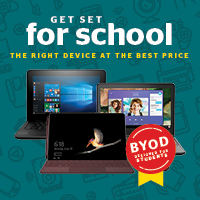Digital Curriculum
Using digital technology to become a life-long learner
At Point Chevalier School | Rangi-mata-rau, digital tools support students to become responsible life-long learners with an active curiosity about themselves and their world. We believe that digital technologies are another tool in the tool belts of our learners.
Digital Citizenship
Point Chevalier School | Rangi-mata-rau works closely with Linewize to provide a robust Digital Citizenship programme, which compliments our School Values. We also work with Netsafe, who advise us on best practices in all aspects of keeping children safe and productive online.
We see a responsible digital citizen as:
A digital citizen is someone who can:
- Can use technology to make positive connections and create things that might not otherwise be possible.
- Demonstrate the School Values when using digital resources in the same way they would when using other learning resources.
- Understands the purpose and context of different digital and non-digital spaces and when best to use them.
- Use their digital skills to participate in life-enhancing opportuntiis and to achieve their goals.
Adapted for Point Chevalier School, based on the mahi of Netsafe
Responsible use of Digital Technologies
Point Chevalier School believes that to foster a culture of successful digital citizenship, our staff & whānau need to work alongside our learners to support them.
To encourage, unpack and share an understanding of what a responsible digital technologies user looks like, we have three stages of permissions.
- Year 0-2: caregivers give permission at the time of enrolment for their child to access digital tools and the school network. More information can be found about how these year levels use digital technology by reading the ‘Digital Technologies Deep Dive’ at the end of this page.
- Year 3&4: Our middle years’ Responsible Digital User Agreement is unpacked between children and their teacher, as well as children and their whānau. All parties agree to their responsibilities.
- Year 5&6: Our senior years’ Responsible Digital User Agreement is a more sophisticated iteration of the middle years’ agreement, building on the foundation skills developed in the previous years. Again, this agreement is unpacked and agreed to by learners, teachers and whānau.
The School Board is aware that preparing our students to make effective use of digital technologies is an important part of their preparation for participation and contribution in society today and into the future.
The School Board recognises its obligations under the National Administration Guidelines to provide all students with opportunities to progress and achieve success in all areas of The National Curriculum, including the Digital Technologies domain.
Digital Technologies Curriculum & BYOD – What is the difference?
It is important to understand the distinction between Digital Technologies & Bring Your Own Device (BYOD).
Digital Technologies Curriculum
The Aotearoa NZ Technology Curriculum was updated in recent years to include the domain “Digital Technologies”. Digital tools also support the intent of other aspects of the New Zealand Curriculum such as supporting a range of ways of learning, effective use of communications tools, involvement in a range of life contexts and being critical consumers and creators.
BYOD
Bring Your Own Device is an option offered and encouraged to children from Year 3-6 at Point Chevalier School. All of our classes have devices available to complement this. There are many advantages to children bringing their own devices, such as familiarity, ease of access and most importantly, the ability to seamlessly move between learning at school and learning at home.
Internet safety procedures
Point Chevalier School has developed, sustains and will continue to refine procedures around the safe and responsible use of the internet and related technologies.
Responsible Use Agreements: these create a shared understanding of how technology can be used to enhance learning as well as ways to minimise and manage the challenges that may be experienced.
BYOD Agreements: From Year 3-6 children are encouraged to bring their own devices. At the start of every year, the children, their teachers and their whānau revisit our BYOD User Agreement. This ensures that the devices are used as learning tools to enhance learning. These agreements cover things such as keeping devices sufficiently charged, not sharing devices and how to store them appropriately. A full copy of the agreement can be viewed here.
Restorative Practices: Should children choose to misuse a digital device, the school’s usual restorative practices will be followed, where the focus is on the Core Value that has not been followed, rather than the actual device being the problem.
All of the above, along with our Digital Citizenship learning, means that the children are regularly reminded of what they should do if something unexpected happens while using their device.
Recommended Devices
We do not specify which type of device your child needs to bring. We do request that it is one that works well and they are confident operating. Chromebooks, laptops, Macs, iPads and Android tablets are all welcome. We do strongly suggest that the device has a keyboard as well as a screen that is a comfortable size for your child to use.
We have partnered with Noel Leeming to outline our most highly recommended devices.

